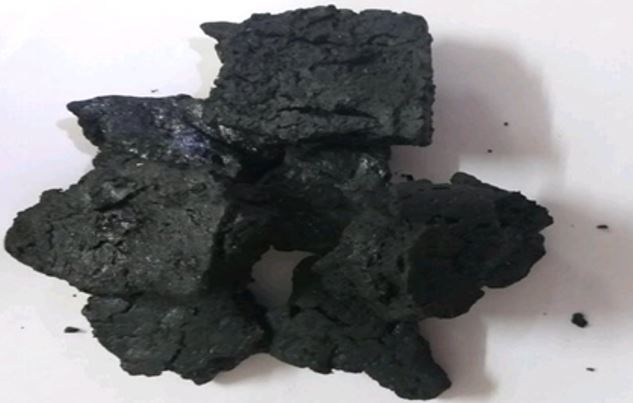Ayurvedic Dhoopan Karma - A Classical to Contemporary Review with special emphasis on Karna Rogas
DOI:
https://doi.org/10.21760/jaims.10.9.29Keywords:
Dhoopan Karma, Karna Roga, Ayurvedic fumigation, Pūtikarna, Herbal fumigants, Guggulu DhoopanAbstract
Dhoopan Karma, an integral part of Ayurvedic therapeutics, involves the fumigation of herbs and medicated substances to purify the environment and treat various disorders. This ancient technique, documented extensively in classical texts such as Charaka Samhita, Sushruta Samhita, and Ashtanga Hridaya, was initially prescribed for Vishodhana, Rakshoghna, and disease management in surgical and infectious conditions. Over time, the therapeutic scope of Dhoopan Karma has expanded from ritualistic and preventive measures to clinical utility in managing Karna Rogas (ear disorders), particularly those involving infection, inflammation, or suppuration. This review explores the classical origins, selection of Dhoopan Dravyas (fumigation herbs), pharmacodynamics, and the method of administration. Emphasis is laid on the therapeutic utility in Karna Rogas, such as Karna Srava (otorrhea), Karna Shoola (earache), and Pūtikarna (foul-smelling ear discharge), where Dhoopan offers anti-microbial, anti-inflammatory, and deodorizing effects. Additionally, the review includes evidence-based findings from contemporary research, validating the bioactive potential of key Dhoopan ingredients like Guggulu, Haridra, Vacha, and Neem. By bridging traditional wisdom with modern clinical relevance, this article highlights the promising future of Ayurvedic fumigation therapy in ENT care, especially in low-resource settings or as an adjunct to modern otological treatments. Further clinical trials and standardization of protocols are suggested to validate and globalize this ancient yet effective modality.
Downloads
References
Sharma RK, Dash B. Charaka Samhita. Vol. 1–3. Varanasi: Chaukhambha Sanskrit Series Office; 2010.
Bhishagratna KL. Sushruta Samhita. Vol. 1–2. Varanasi: Chaukhambha Orientalia; 2009.
Murthy KRS. Ashtanga Hridaya of Vagbhata. Vol. 1–3. Varanasi: Krishnadas Academy; 2012.
Rai D, Sharma V. Clinical utility of Dhoopan in infectious ENT disorders – A classical to modern perspective. J Ayurveda Integr Med. 2021;12(3):465–72. https://doi.org/10.1016/j.jaim.2020.09.002
Patgiri BJ, Prajapati PK. Therapeutic fumigation: A classical review and scientific appraisal. Anc Sci Life. 2014;34(1):24–30. https://doi.org/10.4103/0257-7941.144620
Murthy KRS. Sushruta Samhita (English Translation). Varanasi: Chaukhambha Orientalia; 2015.
Sharma PV. Charaka Samhita with English Translation. Vol. 1–4. Varanasi: Chaukhambha Visvabharati; 2013.
Murthy KRS. Ashtanga Hridaya of Vagbhata. Vol. 2. Varanasi: Krishnadas Academy; 2011.
Tripathi I. Bhaishajya Ratnavali (Hindi Commentary). Varanasi: Chaukhambha Surbharati Prakashan; 2007.
Tiwari KN. Ayurvediya Shalakya Tantra. Part-1: Karna Roga. Varanasi: Chaukhambha Orientalia; 2008.
Mishra S. Dravyaguna Vijnana. Vol. 2. Varanasi: Chaukhambha Bharati Academy; 2012.
Pandey GS. Dravyaguna Vigyan. Vol. 2. Varanasi: Chaukhambha Krishnadas Academy; 2009.
Singh N, Verma S. Pharmacological review on Guggulu and its application in Ayurvedic fumigation. AYU. 2016;37(4):259–63. https://doi.org/10.4103/ayu.AYU_30_16
Tillu G, Patwardhan B. Turmeric (Haridra) and its role in antimicrobial fumigation. J Ayurveda Integr Med. 2017;8(1):32–6. https://doi.org/10.1016/j.jaim.2016.10.001
Thakur RS, Puri HS, Husain A. Major Medicinal Plants of India. Lucknow: Central Institute of Medicinal and Aromatic Plants; 1989.
Sharma RK, Dash B. Agni Karma, Kshara Karma, and Dhoopan in Sushruta Samhita. Varanasi: Chaukhambha Sanskrit Series Office; 2011.
Thakur B, Jain R. Classical formulation and modern standardization of Dhoopan Samagri. Int J Ayurveda Res. 2019;10(3):145–9. https://doi.org/10.4103/0974-7788.264434
Khandelwal KR. Practical Pharmacognosy Techniques and Experiments. 25th ed. Pune: Nirali Prakashan; 2016.
Bhalerao S, Datar M. Application of medicated smoke in ear diseases: A clinical approach. Ayurveda Vignan J. 2015;9(2):21–5.
Patgiri BJ, Prajapati PK. Role of fumigation therapy in nosocomial infection control. Anc Sci Life. 2014;33(4):230–5. https://doi.org/10.4103/0257-7941.144620
Raut CG, Nandgaonkar MR. Evaluation of Ayurvedic medicated smoke therapy for microbial ear infections. J Ayurveda Case Rep. 2020;4(1):45–50.
Borse Y, Tiwari S. Antibacterial effect of herbal Dhoopan against ENT pathogens: An in vitro study. Int J Res Ayurveda Pharm. 2021;12(2):105–9. https://doi.org/10.7897/2277-4343.120213
Joshi AV, Kulkarni RR. Comparative clinical study of Ayurvedic Dhoopan vs. antibiotic drops in CSOM. AYUSH Res Bull. 2020;8(3):88–92.
Sharma A, Mishra P. GC-MS analysis of volatile compounds in Ayurvedic fumigation materials. Pharmacogn J. 2021;13(1):15–22. https://doi.org/10.5530/pj.2021.13.2
Kumar V, Patil M. Fumigation therapy in Ayurveda: A preventive and therapeutic approach for ENT infections. J Integr Health Sci. 2022;6(1):12–8.

Published
How to Cite
Issue
Section
License
Copyright (c) 2025 Satyavati, Shamsa Fiaz, Nasreen Hanifa

This work is licensed under a Creative Commons Attribution 4.0 International License.














